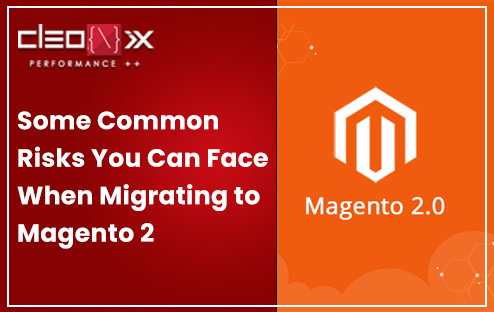
Some Common Risks You Can Face When Migrating to Magento 2
Magento 2 is a popular eCommerce platform that offers businesses the ability to manage their online stores with ease. However, migrating to Magento 2 can be a daunting task, and there are many potential risks that businesses should be aware of before undertaking the migration process. In this blog post, we will discuss some common risks you can face when migrating to Magento 2 and provide some tips on how to mitigate them.
Data Loss
One of the most significant risks when migrating to Magento 2 is data loss. During the migration process, data can be lost due to various reasons, such as improper data mapping or incorrect data formatting. To mitigate this risk, it is essential to back up your data before starting the migration process. You should also perform a thorough data audit to identify any potential data issues and work to resolve them before the migration begins.
Downtime
Another common risk when migrating to Magento 2 is downtime. Downtime can occur when your website is unavailable due to maintenance or other issues, which can lead to a loss of revenue and damage to your brand reputation. To avoid downtime, you should plan your migration carefully and schedule it during a time when your website has the least traffic. Additionally, it is essential to work with experienced developers who can minimize downtime and ensure a smooth migration.
Extension Incompatibility
Magento 2 has a different architecture than Magento 1, and as a result, extensions that worked on Magento 1 may not be compatible with Magento 2. This can cause problems during the migration process, such as functionality loss or website crashes. To mitigate this risk, it is essential to identify all the extensions you are currently using and ensure that they are compatible with Magento 2. You may also need to find alternative extensions that are compatible with Magento 2 to replace any that are not.
Customization Issues
Another risk when migrating to Magento 2 is customization issues. If you have customized your website extensively, you may encounter issues during the migration process. Customizations that are not properly migrated can lead to website crashes, functionality loss, and other issues. To mitigate this risk, it is essential to thoroughly document all your customizations and work with experienced developers who can ensure that your customizations are properly migrated to Magento 2.
Cost Overruns
Migrating to Magento 2 can be costly, and there is a risk of cost overruns. This can happen due to unexpected issues during the migration process or changes in the scope of the project. To mitigate this risk, it is essential to create a detailed migration plan and budget that includes all the necessary resources and potential costs. You should also work with experienced developers who can help you identify potential cost overruns and find ways to minimize them.
SEO Issues
SEO is critical for any eCommerce website, and there is a risk of SEO issues when migrating to Magento 2. If not properly managed, the migration process can result in a loss of SEO ranking, which can lead to a significant decrease in traffic and revenue. To mitigate this risk, it is essential to work with experienced developers who can ensure that all your SEO settings are properly migrated to Magento 2. You should also perform a thorough SEO audit after the migration to identify and resolve any potential issues.
Training Issues
Migrating to Magento 2 can be a significant change for your team, and there is a risk of training issues. If your team is not properly trained on Magento 2, they may struggle to use the platform effectively, which can lead to a loss of productivity and revenue. To mitigate this risk, it is essential to provide your team with comprehensive training on Magento 2 before and after the migration. You should also work with experienced developers who can provide guidance and support during the training process.
In conclusion, migrating to Magento 2 can be a complex process, and there are several risks involved. However, with careful planning and the help of experienced developers, businesses can mitigate these risks and ensure a successful migration. It is essential to perform a thorough data audit, identify potential issues, and create a detailed migration plan and budget that includes all the necessary resources and potential costs. Working with experienced developers who can minimize downtime, ensure proper data migration, and provide comprehensive training for your team is also crucial. By taking these steps, businesses can make the transition to Magento 2 with confidence and avoid the potential risks that come with the migration process.
READ ALSO: Tips to Optimize Magento Cart Page for Better Conversion Rate
 AJ 14, Salt Lake, Sector 2, Kolkata - 700091 |
AJ 14, Salt Lake, Sector 2, Kolkata - 700091 |  743 Virginia Ave NE Atlanta, GA 30306
743 Virginia Ave NE Atlanta, GA 30306

